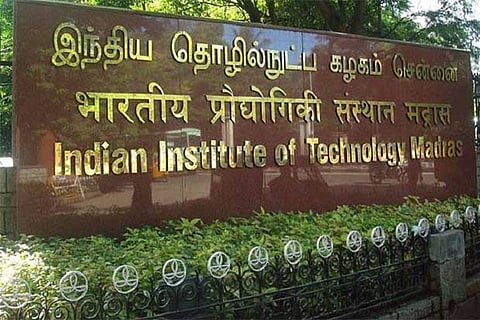

CHENNAI: Indian Institute of Technology Madras (IIT-M) on Monday honoured twelve of its alumni in the Indian Space Research Organisation (ISRO), who played a pivotal role in the historic Chandrayaan-3 mission.
Addressing the gathering, S Unnikrishnan Nair, Director, Vikram Sarabhai Space Centre (VSSC), ISRO, said, "This month, we will be having the first big mission of Gaganyaan from Sriharikota. We are going to demonstrate the in-flight system. In manned missions, it is not the mission success but it is the safety of the crew that counts. We are testing and ensuring that the escape system has got a very high reliability. The escape system will be activated in transonic conditions, which is Mach 1.2 and we will demonstrate how the crew will be rescued. We are all looking forward to that mission. There are many exciting missions in the future."
"Another interesting mission that we did at Chitradurga Range was a winged aircraft that we call a 'Reusable Launch Vehicle'. Unlike a conventional satellite, it is a winged body like the space shuttle. The last phase of this experiment, which is dropping from a high kilometer and landing, that too in a totally autonomous way using its intelligence, we could land very close to the central line of the runway. The difference was only 18 cm. That was the type of accuracy we could achieve. And this technology, maybe in another two years' time frame, will mark another era of reusable launch vehicles, thereby reducing cost," he added.
Delivering the keynote address and a presentation on Chandrayaan-3, P Veeramuthuvel, Project Director, Chandrayaan-3, ISRO, said, "It is by virtue of excellent teamwork and sheer perseverance that we have achieved this safe and soft landing technology on the lunar surface. It is not only an achievement for the scientific community but it has become the country's achievement. This time, failure was not an option for us. But success did not come easily either. We crafted the lander in such a way that any path it takes, it should land.
That was our strategy this time. All our teams, particularly, across navigation, guidance, control, propulsion systems, sensors, and all the components, worked in unison. The confidence stemmed from hundreds of lab tests and three important field tests. That was the most challenging task - creating the lunar environment on Earth and proving that all our systems would work before the launch. It was one of our important tasks."
"The Moon is away by 3.84 lakh km. Reaching the moon itself is a challenging task, even though we have done it in Chandrayaan 1 and 2. We have to do it precisely. All system performances have to be on the dot to reach the moon. Unlike other spacecraft, we have to launch in a specific launch window because the landing is dictated by the launch window. We cannot launch in any given month. We typically have a window that is twice a year - January to February and July to August. Which means, we have to realise the spacecraft well on time," he detailed.
Speaking earlier, Prof V Kamakoti, Director, IIT Madras, said, "COVID has taught us that indigenous technology is extremely important to make our country a superpower in the next 25 years, as we march towards the 100th year of Independence. Very shortly after COVID, here is a great achievement where many interdisciplinary activities, products, and components have gone in. Here are the heroes who say that the sky is no longer the limit. We can go much above it."
The top scientists and engineers from ISRO also interacted with students from IIT Madras and various government schools and city colleges during an event titled 'Over the Moon with Team Chandrayaan-3' held on the campus.
It may also be noted that Shri S Somanath, Chairman, ISRO, is currently pursuing a PhD from the Department of Mechanical Engineering at IIT Madras.